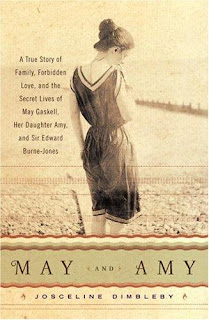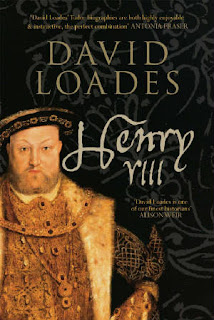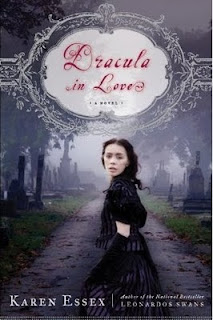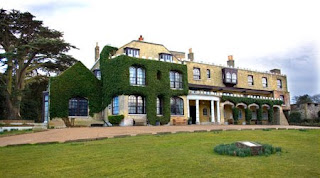Paperback: 384 pages
Publisher: Three Rivers Press (CA); Reprint edition (28 Mar 2006)
Language English
ISBN-10: 0307335895
ISBN-13: 978-0307335890
Always intrigued by Edward Burne-Jones’s portrait of her great-aunt, Amy Gaskell, Josceline Dimbleby’s chance meeting with the painting’s current owner encouraged her to explore the mystery of her own family’s past and the life and death of her beautiful great-aunt.
In her search, Dimbleby uncovered a passionate correspondence between Burne-Jones and her great-grandmother, May Gaskell, Amy’s mother, which continued throughout the last six years of the Pre-Raphaelite painter’s life.
As she delved deeper into their engrossing lives, questions emerged. What was the deep secret May had confided to Edward? And what was the tragic truth behind Amy’s wayward, wandering life, her strange marriage, and her unexplained early death?
Weaving together the threads of this tale, Dimbleby takes us through a turbulent period in English history and visits the most far-flung corners of the Empire. William Morris, Rudyard Kipling, William Gladstone, and prominent members of the Souls also play a part in this sweeping, often funny, and sometimes tragic story. Richly detailed and exquisitely told, May and Amy is a stunning account of hidden love and family secrets.
The portrait that started it all...As a special present for May Gaskell, Burne-Jones painted this portrait of her favorite daughter Amy, aged nineteen, 1893
MY THOUGHTS ON THE NOVEL
Pre-Raphaelite painter Sir Edward Burne-Jones was married to Georgiana Macdonald during his many friendships with sculptor Maria Zambaco which did become a full blown affair and May Gaskell.This novel lovingly and respectfully, through family correspondence, tells the life stories of the author's family members: great grandmother May Gaskell, great aunt Amy Gaskell.
According to the author, Georgiana either looked the other way during Burne-Jones' many dalliances or simply 'put up with it' since this information is told by Burne-Jones himself!
Burne-Jones letter to May Gaskell's daughter Amy mentions Georgie. This is well into the friendship between May and Burne-Jones, "Georgie is a brick about troubles and sorrows and as wise as the Delphi Sybil. Georgie loves damsels and is the best company in the world for them-you will write to her won't you. I want her to feel you have some friendship for her, and would trust Amy to her-she shall not have a dull time either-Phil(BurneJones son) and I will take her to amusements and the days shall not depress her. And somehow I will get a little of her confidence (Dimbleby, Page 132)
Burne-Jones writes further to May about Georgie saying, "It makes me so happy that Georgie welcomes you-some day come to see her for her own sake-she is the wittiest company, and very pious-I say pious because all things are serious to her-only she is bitter upon folly-she is not a Christian any more and yet she hates to be approached except on bended knees(Dimbleby, page 105)

Burne-Jones' wife Georgie - seen here in a portrait painted by her husband. Their children, Phil and Margaret are in the background.
MARIA ZAMBACO AND BURNE JONES
His first portrait of Maria Zambaco
The Beguiling Of Merlin, the most recognizable painting of Sir Edward Burne-Jones. He paints her as the sorceress Nimue.
Here she is in The Tree of Forgiveness which Burne-Jones painted towards the end of the affair.
The dynamics between the men and women in these two paintings just about says it all doesn't it?
As his model, Maria Zambaco's dramatic Greek looks had inspired Burne-Jones to produce some of the best paintings and drawings he had ever done. The affair resulted in inevitable pain and misery and with Maria's volatile temperament, in a public drama. There was rumor of a suicide pact and then she did indeed attempt suicide. The affair shook Burne-Jones deeply and permanently changed his relationship with his wife, Georgie, although she was to stand by him devotedly, even if at times somewhat sternly, to the end.
Burne-Jones alludes to this affair in a letter to May,
"the one who hurt me was not wicked a bit-it was a hard life to lead and she broke down-that's all-she minded so much and so much feared to hurt that it drove her to cheat-she thought I couldn't like her if I knew she was passionate so she hid it always-but I should have liked it all the more you see, for it is the one thing that is beautiful to me, and pardons all-but there it was-for the first years it must have been an unbearable life to her-it was to me-who can be a wicked hell of passion if I let go-and I never forget hearing of her crying all night or walking about in rain outside the house when I was ill, for hours(Dimbleby page105)
BURNE JONES AND MAY GASKELL
'I mean by a picture a beautiful romantic dream, of something that never was, never will be — in a light better than any that ever shone — in a land no-one can define or remember, only desire'
Portrait of Helen Mary Gaskell(May)
Sir Edward Coley Burne-Jones, 1893
Last drawing of May Gaskell by Edward Burne Jones, 1898
Helen Mary Gaskell (May) was the great grandmother to author Josceline Dimbleby
NOTE: Lily of the Valley pinned to her blouse over her bosom. Lily of the Valley symbolizes a return to happiness, purity of heart, sweetness, you've made my life complete, humility, love's good fortune (Language and Meaning of Flowers)
NOTE: Lily of the Valley pinned to her blouse over her bosom. Lily of the Valley symbolizes a return to happiness, purity of heart, sweetness, you've made my life complete, humility, love's good fortune (Language and Meaning of Flowers)
The first letter Burne-Jones wrote to May Gaskell says it all really...
O my God how I love you-it's terrible that one creature should have such power over any other-and I lie under your feet-and have no will or strength against you. Why did I leave you today-I left all my happiness with you-a poor thing came back here, a poor shell, and my heart was away-my heart nestles under your feet, so tread softly...I shall lie and think of you and wake and think of you and of the sweet comfort we shall be to each other over our life days-you are not to mind if I have been hurt-it is such sweet pain and it's all for you (Dimbleby, page 8).
THE DEATH OF EDWARD BURNE-JONES
17 June 1898: Burne-Jones spent a quiet evening with Georgie. They played dominoes and then Georgie read aloud by lamplight, as she often did now that her husband's eyes were so bad. Finally, they went up to their separate bedrooms. Burne Jones undressed, settled himself on his bed into the position of King Arthur in his painting, and waited for sleep to come.
Between their bedrooms was a speaking tube. In the early hours of the morning, Georgie heard her husband cry out that he had a pain in his heart. She hurried to him. It was a fatal heart attack. The man with the scythe had finally come to him. Georgie could do nothing; within a very short while Sir Edward Burne-Jones was dead. He was sixty-five years old.
Burne-Jones had always felt his painting provided, like a transcendental experience, a link with another world. Dying as he did, after working all day on the death scene of King Arthur at Avalon, it was as if he had finally entered the world he loved most, the legendary world of his paintings (Dimbleby, page 178).
In closing, at the end of May Gaskell's life, she summed up her friendship with Burne Jones,
"His friendship to me was like a benediction through the storms of life--his love a safeguard--his influence a continual help to the present hour"(Dimbleby, page 7)
If you would like to get better acquainted with the man behind the glorious paintings, then I highly recommend this novel. It is available online worldwide.
Please feel free to leave any comments,




















